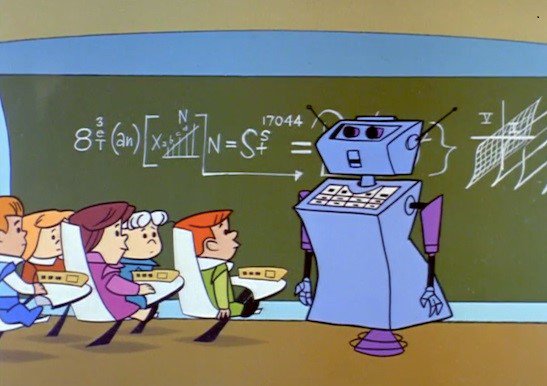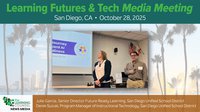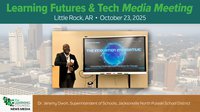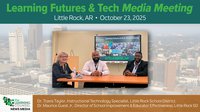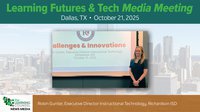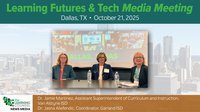While there is little doubt that classrooms have become more sophisticated and digital; the physical classroom setting and furniture haven’t evolved at nearly the same pace. The tablets that are transforming the learning process still sit on top of the same style desks from the 1950s. The blackboards and chalk may have been replaced by interactive whiteboards connected to a computer or projector, but far too often, students still sit in stagnant rows looking up in the same direction at the teacher for the daily lesson.
While curriculum modernizations create opportunities for teachers and students to use the classroom space more effectively, traditional classroom furniture does not. Rearranging and maximizing the classroom space is inefficient and eats into precious classroom time when students and teachers have to struggle to move desks. In addition, sitting all day takes a toll on young bodies. In order for the classroom to truly evolve, it is time for teachers, principals and district administrators to address the entire classroom environment.
The New Learning Space
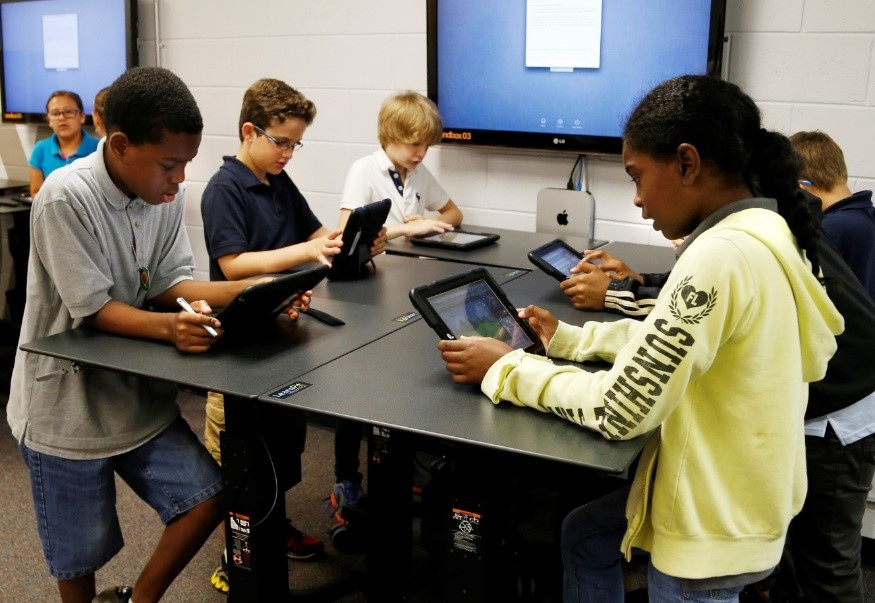
During my travels, interviews and many edtech conventions I've seen more and more examples of the new classroom or “new school.” Of course these are private schools for the most part. (Public—c’mon we need you in the game). But, be that as it may, it is the wave. “Going digital” means infrastructure, PD, digital curriculum choices and planning, device decisions and deployment. Space planning may not be part of that strategic plan. But what I am seeing is that it needs to be. For our new generation. Where schools are taking this step, they are leading.
So, while it may not always be the first priority, classroom furniture at the most foundational level enhances the educational tools and technology it’s supporting. At an aspirational level, it also supports the teachers’ curriculum, the students’ health, comfort and learning styles.
Taking this “redesign of the classroom” step will undoubtedly require a fundamental change in thinking as schools adopt 1:1 technology, requiring analysis of what else is changing in association with the technology. A few important questions schools have had to consider in planning this move are:
• If new curriculum takes students out of the chairs and around the room more often, should the desks stay where they are or move with them?
• Should a standard metric of desk size/chair size be used when classroom demographics are anything but uniform?
• How can schools maximize student health without taxing facilities’ time with adjusting furniture?
• How much more time on task could be gained if students are allowed to move, stand, or fidget when the right environment is planned?
• What can be done to increase student engagement and performance?
For example, mobile height-adjustable standing desks foster an individualized learning environment that addresses these issues and offers a myriad of benefits to teachers, students and the school. Access to adjustable furniture reduces fidgeting distractions, gives teachers more time to teach, increases student engagement, improves academic performance and enlivens curriculum. In addition, concerns about childhood health issues are addressed when students are given an alternative to sitting all day—introducing standing into the classroom is an effective means to break up sedentary behavior.
The health implications & benefits of active learning styles
Statistics show the average elementary aged student currently spends approximately nine hours per day in the seated position, and reports estimate that more than 80 percent of these school children sit at a chair-desk combination that is not suitable for their body height.
A recent report from Annals of Internal Medicine concluded that longer sitting time is associated with a higher risk for disease, including heart disease, cancer and type 2 diabetes; sitting is an independent risk factor—regardless of other vigorous physical activity. These sedentary reports are alarming on several fronts aschildhood obesity has more than doubled in children and quadrupled in adolescents in the past 30 years.
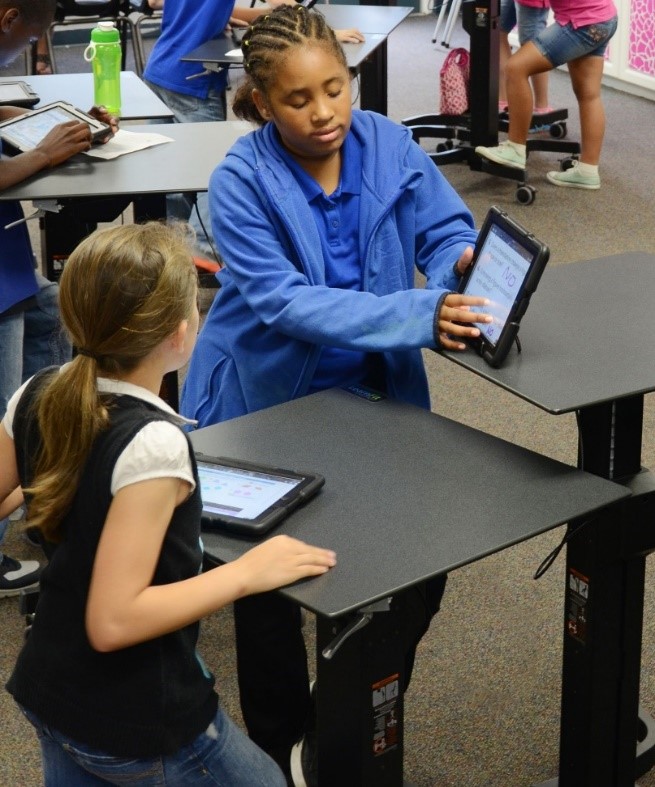
Compounding this is the fact that time for Physical Education is being sacrificed for more classroom time for the core subjects and standardized testing. To combat these trends, many nation-wide movements have been put into place that focus on getting kids more active during the day through activity breaks and exercise outside of school.
“Research shows that the model for learning should reflect the fact that the physical activity serves a vital function in all aspects of a child’s development,” stated Carrie Schmitz, Ergonomics and Wellness Researcher. “Introducing more innovative, low-level physical activities such as standing more into the classroom can create active learning styles that are more conducive to learning than the traditional classroom format. Even a modest increase in activity throughout the day can increases blood flow and oxygen to the brain, insulin effectiveness, energy and attentiveness which ultimately improves focus and helps increase academic performance. With, for example, the LearnFit™ Adjustable Standing Desk from Ergotron, each student can instantly personalize their desk to his or her preferred height, not only improving their metabolic health but also promoting better posture and musculoskeletal health.”
Enabling mobility and enhancing collaboration
Facilitating the move from traditional lectures to more group-based, collaborative and active environments requires adjustable and highly mobile furniture for both students and teachers.
Stationary desks do not lend themselves to an active or collaborative classroom nor do they facilitate a group-dynamic or mobile learning environment that has become so prevalent in today’s educational system. The implementation of mobile standing desks allows students to customize their learning station.
Input from surveys, interviews and case studies have all demonstrated that teachers prefer desks that facilitate movement and that students intuitively adapt to their needs. These types of desks foster collaborative learning while satisfying a child’s need for motion and allow for the teacher to use every inch of the environment for instruction.
Supporting the new classroom
Given today’s intersection of technology and education, the classroom set-up is at a crossroads. Case studies have shown the positive role that physical activity and height-adjustable desks can have in modern education, helping address the physical and cognitive challenges experienced by students in what has traditionally been a sedentary environment. It is also important to note that adjustable student desks support modern pedagogy, even if a classroom does not currently use 1:1 device and software technology.
There is no doubt that classroom furniture can play a critical role in making today’s classrooms healthier, more collaborative and more conducive to learning.
It looks to me like it is time to “stand up” for the classroom of the future—today.

